This doesn't change during a most transformations.
What is the size?
The word that describes translating.
What is sliding?
This word is another way of saying reflecting
What is flipping?
This rule describe translating up 6 units.
What is (x,y) -> (x, y+6)?
The graph depicts a rigid transformation.
What is a translation 1 unit right 2 units down? (x,y)->(x+1,y-2)
These are the types of transformations that does not change the size.
What are reflections, translations, and rotations?
Adding to the x-coordinate moves a figure in this direction.
What is to the right?
The given graph depicts a rigid transformation.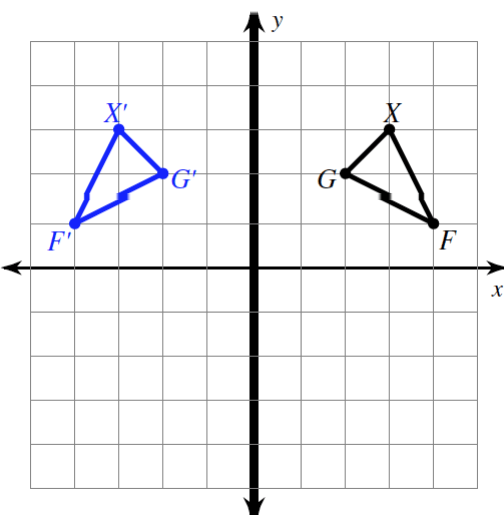
What is a reflection in the y-axis?
The picture below shows this type of transformation.
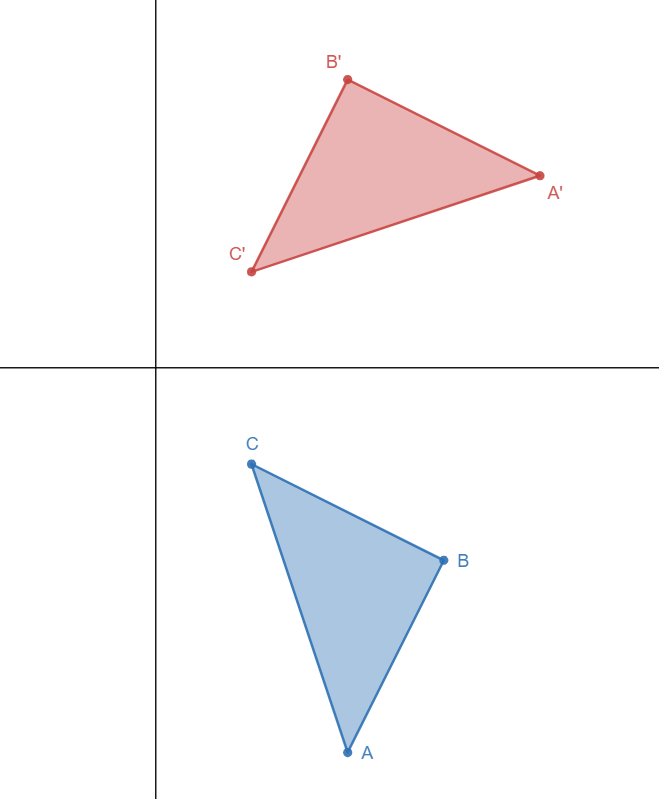
What is rotating?
This is the image coordinate pair when the preimage (1, 6) is translated to the left 3 and down 1.
What is (-2, 5)?
This coordinate changes when a figure is reflected over the x-axis.
What is the y-coordinate?
This is rule for the following translation:
(1, 5) -> (3, 0)
What is (x, y) -> (x +2, y - 5) ?
This notation(symbol) is how we differentiate the preimage from the image.
What is prime?
This is what happens to the coordinates if a figure translates up and to the left.
What is subtracting from the x-coordinate and adding to the y-coordinate?
The figure has been reflected over this line.
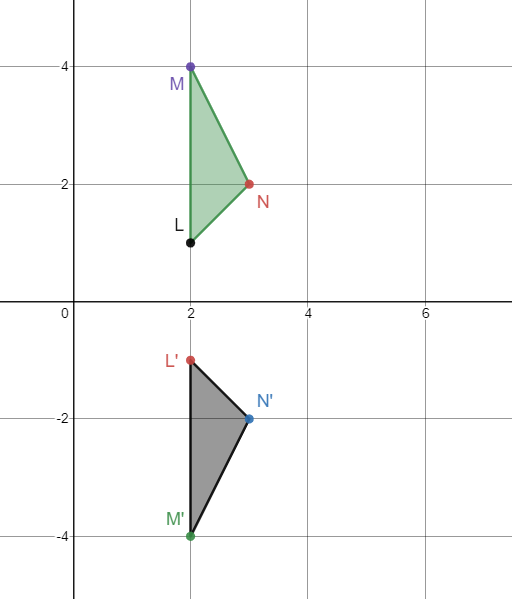
What is the x-axis?
The given graph depicts a rigid transformation.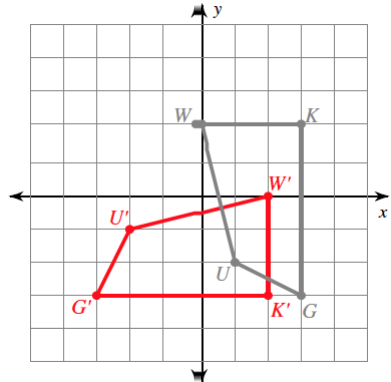
What is a 90-degree clockwise rotaition?
This figure is the image in the following reflection:
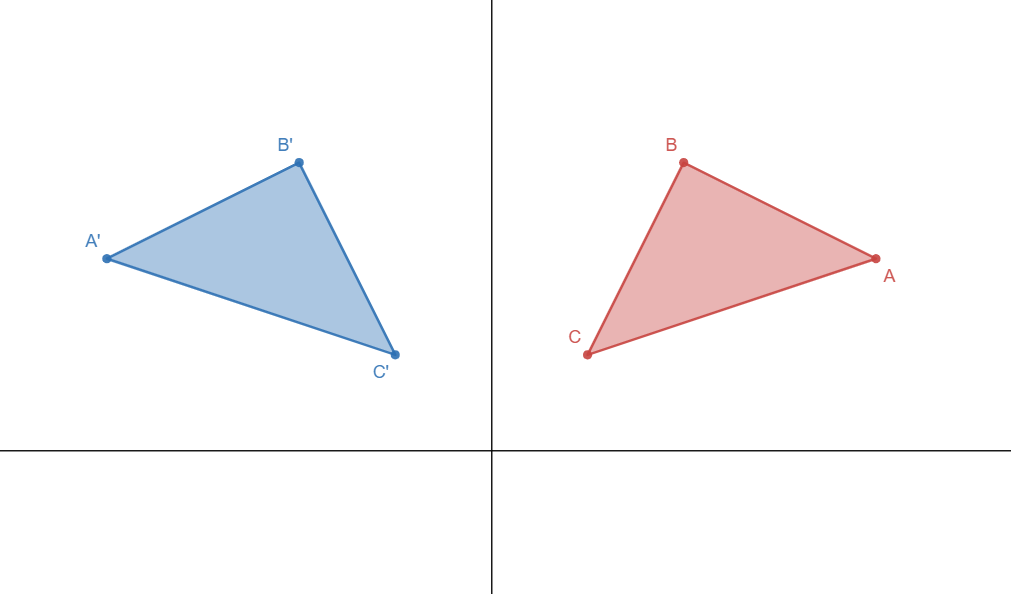
What is the blue figure?
The shapes are translated in this direction these many units.
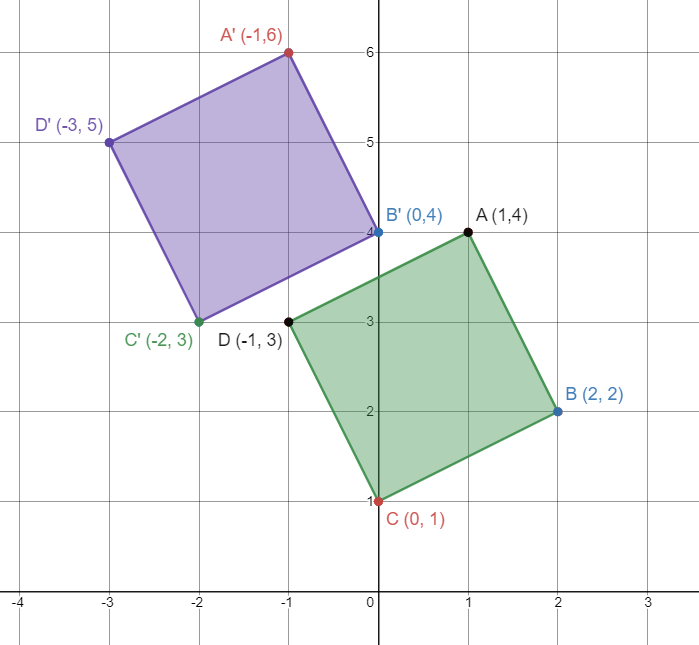
What is left two units, up two units?
This is the coordinate A' after the figure below has been reflected over the given line.
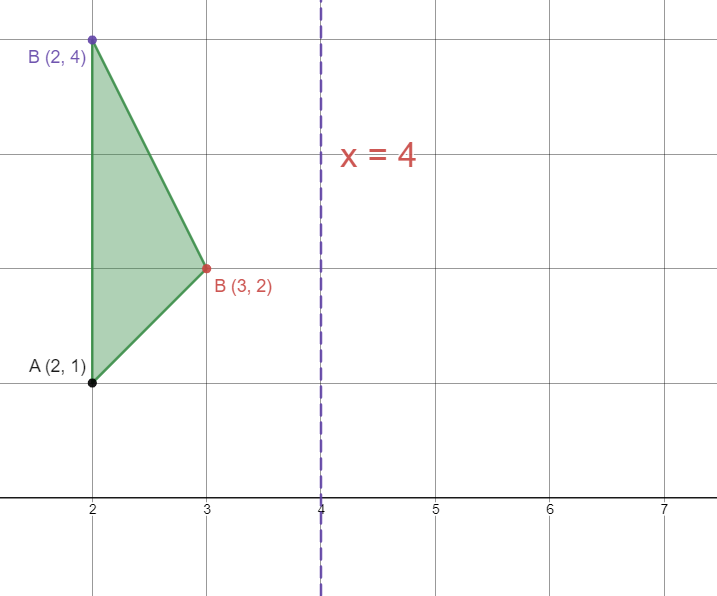
What is (6, 1)?
This is the algebraic representation of a translation that moves a figure 2 units left and 3 units up.
What is (x, y) → (x − 2, y + 3)?